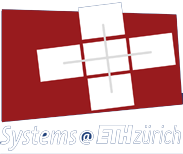Publication
January 2013
An increasing number of applications such as risk evaluation in banking or inventory management require support for temporal data.
After more than a decade of standstill, the recent adoption of some bitemporal features in SQL:2011 has reinvigorated the support among commercial database vendors, who incorporate an increasing number of relevant bitemporal features. Naturally, assessing the performance and scalability of temporal data storage and operations is of great concern for potential users.
The cost of keeping and querying history with novel operations (such as time travel, temporal joins or temporal aggregations) is not adequately reflected in any existing benchmark.
In this paper, we present a benchmark proposal which provides comprehensive coverage of the bitemporal data management.
It builds on the solid foundations of TPC-H but extends it with a rich set of queries and update scenarios.
This workload stems both from real-life temporal applications from SAP's customer base and a systematic coverage of temporal operators proposed in the academic literature.
In the accompanying paper we present preliminary results of our benchmark on a number of temporal database systems, also highlighting the need for certain language extensions.
In the appendix of this technical report we provide all details required to implement the benchmark.
@techreport{abc,
abstract = {An increasing number of applications such as risk evaluation in banking or inventory management require support for temporal data.
After more than a decade of standstill, the recent adoption of some bitemporal features in SQL:2011 has reinvigorated the support among commercial database vendors, who incorporate an increasing number of relevant bitemporal features. Naturally, assessing the performance and scalability of temporal data storage and operations is of great concern for potential users.
The cost of keeping and querying history with novel operations (such as time travel, temporal joins or temporal aggregations) is not adequately reflected in any existing benchmark.
In this paper, we present a benchmark proposal which provides comprehensive coverage of the bitemporal data management.
It builds on the solid foundations of TPC-H but extends it with a rich set of queries and update scenarios.
This workload stems both from real-life temporal applications from SAP{\textquoteright}s customer base and a systematic coverage of temporal operators proposed in the academic literature.
In the accompanying paper we present preliminary results of our benchmark on a number of temporal database systems, also highlighting the need for certain language extensions.
In the appendix of this technical report we provide all details required to implement the benchmark.},
author = {Martin Kaufmann and Peter M. Fischer and Norman May and Donald Kossmann},
title = {Benchmarking Databases with History Support},
url = {http://dx.doi.org/10.3929/ethz-a-009994978},
year = {2013}
}

